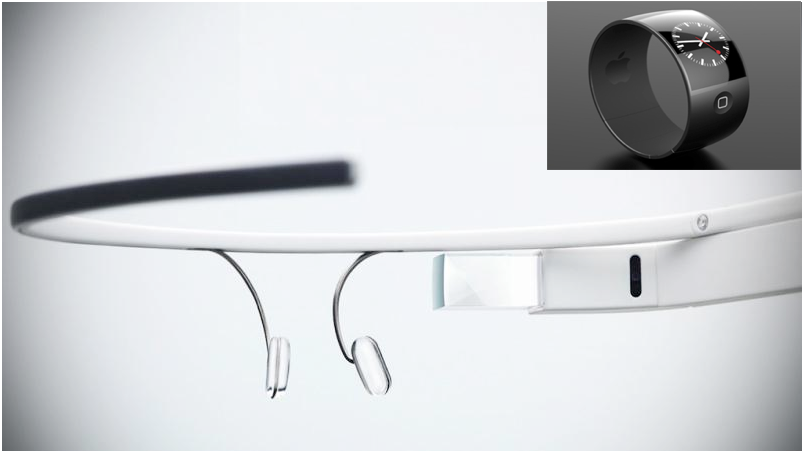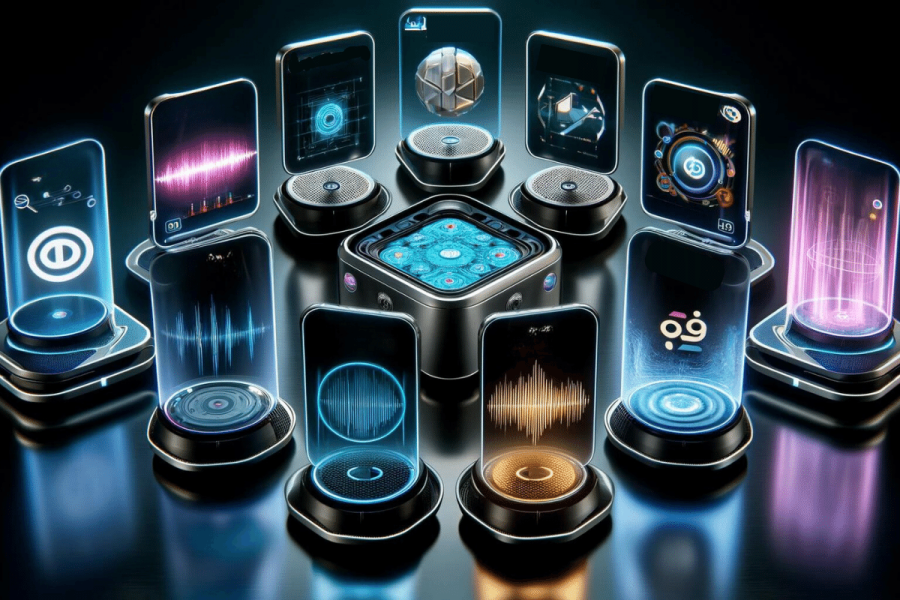
Guest author Greg Roberts is co-founder and chief designer of dSky9.com.
In the upcoming battle of wearable computing, it’s Google Glass vs. iWatch. Google vs. Apple. Clash of the Titans.
(See also Google Glass: What Do You Want To Know About Google’s Internet Eyewear?)
These two companies attack the challenge of wearable computing from two completely different perspectives. Which one will dominate?
Sure, the battle is a little lopsided in that Google Glass is a real product, albeit still for developers only, while iWatch remains only speculation. But let’s assume that both will be real products soon enough and look at their individual strengths and weaknesses.
Face vs. Wrist
It all starts with physical location, or what real-estate the devices occupy on the user’s body:
iWatch: The wrist is an easy target, as it has been the home of technological advancements from the beginning of the wristwatch era, c. 1920 and peaking during the digital watch revolution in the 1970s. Many people are used to wearing technology on their wrists.
It is easy to imagine that by the time we see the iWatch 3gs, it specs will surpass even the best of today’s smartphones. But in all its glory, the iWatch is really just moving the tech from your pocket to your wrist, with a smaller display. Or, in a less ambitious scenario, the smartwatch is merely a satellite hub to your existing smartphone, showing filtered notifications as needed, with a limited touch surface with which to interact.
Plus, you will still have to pull up your sleeve to see the display. (On the other hand, it’s not obtrusive when not in use.)
Google Glass: Putting technology on your face is a much bigger cultural hurdle. For Glass to succeed, humans will need to get used to wearing a computer on their face – and to looking at and interacting with other people who have computers on their face.
Google Glass, however, doesn’t just shift the location of the phone screen: instead it offers a completely new computing paradigm.
The unique benefits of smartglass include
- True hands-free computing
- Low-profile camera that records true first person PoV video/stills
- Head tracking (it knows where you are looking)
- Private audio (via bone conduction)
- Private viewing of information
None of these benefits can be realized with even the most most sophisticated smartwatch. In short, Google Glass affords a far more intimate connection to the infosphere than any other wearable tech, short of implants.
(See also Why Google Glass Is Far More Important Than Any Smartwatch.)
Importantly, Glass superimposes net information atop your natural view of the world. Users of smartphones and smartwatches find themselves sucked into screens, walling off the outside world. The Google Glass interface instead places a small, semi-transparent overlay seamlessly atop actual waking reality.
That means Google Glass could dramatically reduce the time and effort required to retrieve information from your files or the Internet. While Google Glass is still a prototyple, a well-engineered smartglass could reduce many such tasks from more 12 seconds to less than 3 seconds.
Big Time Savings
While saving 8 seconds may not seem like a lot, multiply it times the 100 or more times a day users typically accesses their smartphones, and it becomes massive. In fact, that aspect alone could potentially save users 13 minutes a day, or almost 80 hours a year. That’s two full weeks of work!
It would also reduce muscular exertion for these processes: Compare getting a phone out of your pocket, pushing several buttons and then typing to simply tilting your head skyward and saying “OK Glass.“
Results? Information is no longer at your fingertips, it’s closer than your fingertips. Information retrieval could become so fluid that it becomes ingrained into your very consciousness… ideally becoming a genuinely natural extension of our biological brains and thought processes.
Google Glass Has A Long Way To Go
As it stands, Google Glass is a long way from delivering on that promise, but the potential benefits of a device that fully realizes the concepts Glass pioneers are truly revolutionary.
Will those potential benefits outweigh the in-your-face social and fashion issue that might make people hesistant to wear Google Glass, especially in public?
Maybe, especially if Google can successfully position the product as a coveted fashion item that transcends tech. If that happens, the iWatch will be nothing but an afterthought.









